
Digital Hit Camera
11 Feb 2023Progress: Concept
25 years ago, we saw Austin Powers, International Man of Mystery, infiltrate an enemy abode and capture some covert pictures using a tiny spy camera.
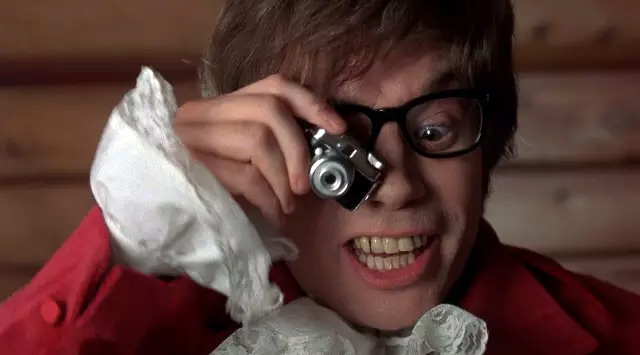
The camera in question is not a mere prop, it's a real working camera, one of a few known as Hit Cameras. But Hit Cameras weren't spy cameras, they were toys. The original Hit camera was released in the 1950s, and a string of imitations all followed the same general plan: extremely basic controls, tiny impractical roll film, terrible image quality. But no one can deny the most appealing aspect, just how cute the subminiature cameras are.
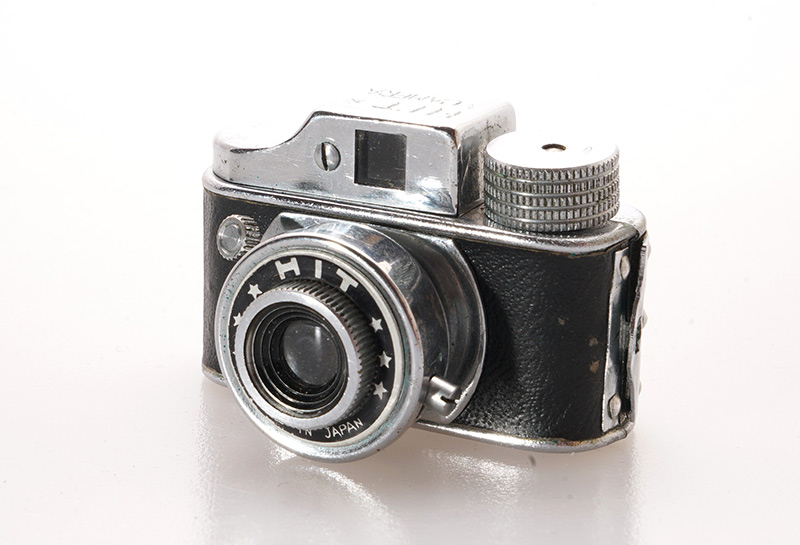
Even one in good condition doesn't cost much on eBay, because beyond the gimmicky appeal they're not very good cameras. If you wanted to shoot with it, I guess you'd have to prepare your own non-standard roll film, and develop it yourself. Maybe you could 3D-print a miniature reel to load it into a dev tank. I, for one, don't have the patience.
From the moment I first saw a Hit camera, I longed for a digital one. It didn't need much in the way of controls at all, auto-everything is fine, and it didn't need a screen or any other fancy nonsense. Just click to take a picture.
"Digital hit camera" became one of my regular searches, the type of dream I revisit every few months, and lament its lack of existence. Such a product should be easy to produce. Eventually, in the mid 2000s, my dreams appeared to come true. A tiny keychain digital camera.
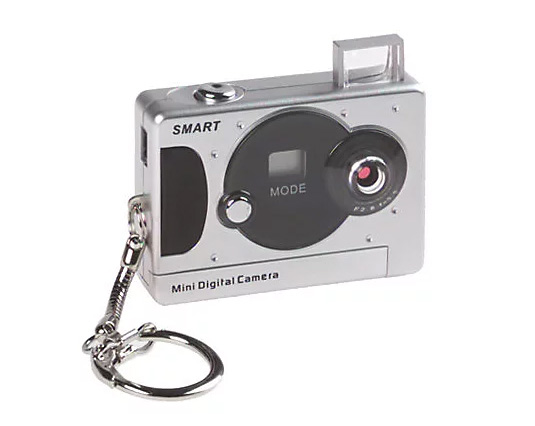
Don't get too excited. It did appear to meet my specification – just one button, no screen. It had a tiny slide-out viewfinder. Although it's tiny, it isn't quite as small as a hit camera, but it's close. The biggest part is that the power source is one AAA battery. There's no SD card slot, I think this may even have been before the introduction of microSD. The proprietary connector on the side gave USB access to the pictures, and it could also function as a webcam.
The pictures it took were terrible. But that's OK!
By far the most disappointing thing about this camera was that it didn't look like a Hit camera. It looked like cheap plastic, which is what it was. The camera's ultimate demise was met when I unsuccessfully attempted to transfer its internals into an alternative, custom enclosure. A few years later, I bought another one of these keychain cameras, and it also met its end under very similar circumstances.
The entire appeal of a digital Hit Camera is its look and feel, and if it doesn't deliver on the look and feel then I was never going to be satisfied. There's something about the black-and-silver, faux-leather, faux-rangefinder. The infinite, recursive appeal of a scale model. The Hit Camera's slightly – but not overly – cartoonish proportions.
I'm not the only one crying out for a Digital Hit Camera. Later that decade, the market was met with this.
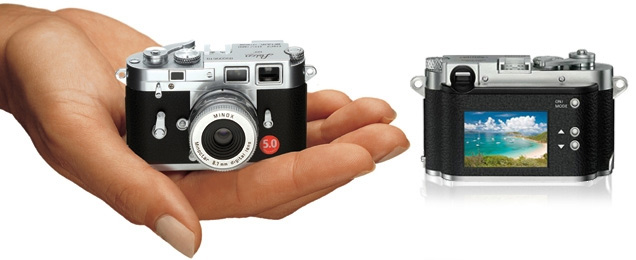
A working, digital scale model of a Leica M3. This is long before the appearance of scale-model games consoles that took off a decade later. On the surface, it seems perfect. In terms of look and feel, they've nailed it.
But where it falls down is its size. Sure, it's about half the size of a real M3, but that's still way bigger than a Hit camera. Secondly, they've tried to make it good (and not succeeded). Adding a screen is a bit misstep. Instead of a toy, the camera is marketed as a high-end luxury item, costing an absurd amount of money, and arriving in a fine wooden box. This despite having a measly 2.1 megapixel sensor.
Today, you can get one of these cameras on eBay for a few hundred pounds. There appears to be a cheaper, alternative version that lacks the full screen on the back. I can't find a clear timeline of when the different versions came out. All I remember is that at the time, I couldn't afford it even if I'd wanted it.
Technology marches on, and every few years I'd revisit the idea of a digital Hit Camera. Smartphones changed the world. You can now get very good camera sensors in a very tiny package for a very tiny price. Why can't we have a digital Hit Camera?
The original keychain camera is still available, and still as shit as it ever was, but in later years keychain cameras went in a different direction. There's a certain beauty in the fact that we've come full circle, where the real market for keychain cameras is in spying. At least, in the eyes of the manufactures in China, we all want is to secretly film each other naked or whatever.
The early 2010s brought us the first generation of 808 Camera.
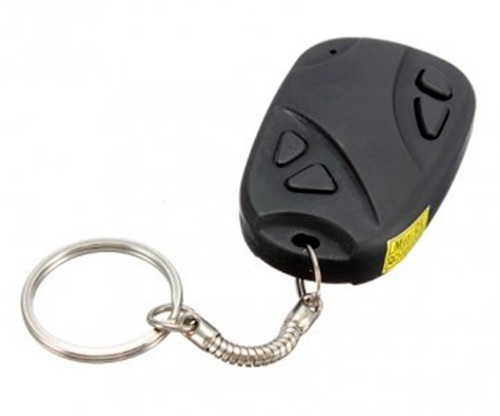
Disguised as a key fob, these came to our attention because actually, some of them were really good cameras. The later models were able to film HD video in remarkable quality, in a tiny package that cost little enough to be disposable. In an era when "official" sports cameras like the GoPro cost hundreds, here was something you could attach to a hockey stick and not care if it got whacked. My first one got smashed while taped onto a roller-blade boot, but up until the moment of impact, the footage was great!
They didn't do so great at still images, unfortunately. The exposure was almost always unbearably bad. 808 cameras were first and foremost video capture devices. Despite this, I still tried to transfer one into a Hit-Camrea-esque enclosure, failing because of the shape and shortness of the flex-PCB.
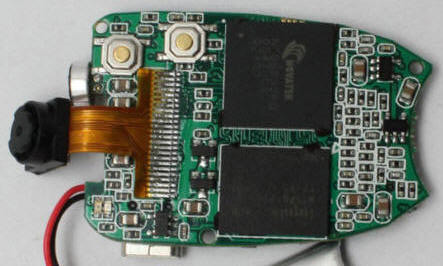
If you search for keychain cameras today, most of the results aren't working cameras, they're mini LED flashlights in the shape of cameras. The closest thing I can find to what I'm after is this, a cheap plastic moulding of a fake DSLR:
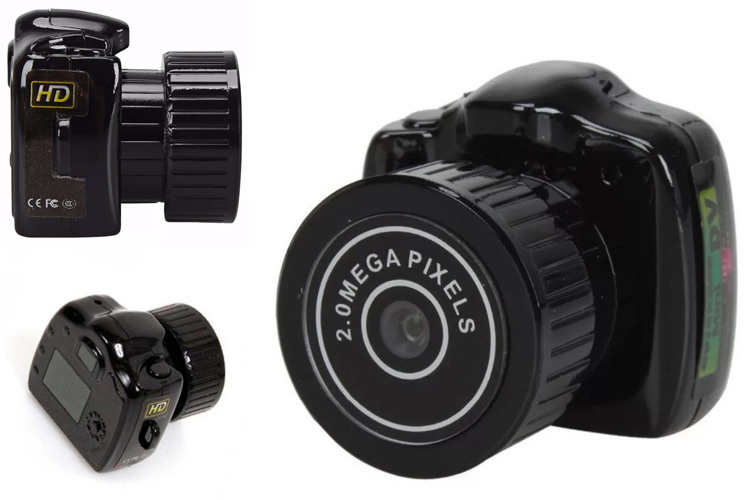
At least it takes pictures, but like the 808s, it's intended for video. Let's be honest, it looks pants. The shape of a DSLR is dictated by ergonomics, not aesthetics. No one likes bulky DSLRs for their look.
My rambling quest for this camera has yet more stops that I haven't mentioned (let's not even go near the Pentax Q, the promise of a scale-model system camera) but at this point we've easily enough context to set out our proposal:
- A working digital camera in the shape of a tiny rangefinder, at maybe 1:4 scale
- No screen, probably no controls, just a button to take pictures
- Made of metal and faux leather, with intricate detail if possible, but even the simplified look of a Hit camera would do
Given how relatively cheap the vintage Hit cameras are, one approach would be to gut one and fill it with new gubbins. I'd feel some guilt about doing that though.
If I could find a suitable donor camera, at this point I'd like to believe I have the skills to successfully build a new enclosure for it. It would be an exercise in model making more than anything.
Perhaps one day it shall be realised.
Update (2025-08-21)
Since posting this project page, I've continued to periodically search for that dream, and accumulate a mass of not-quite-good-enough keychain cameras. I found a good few candidates for conversion. Here's one I pulled apart, ready and waiting for me to machine a new rangefinder-esque enclosure for it.
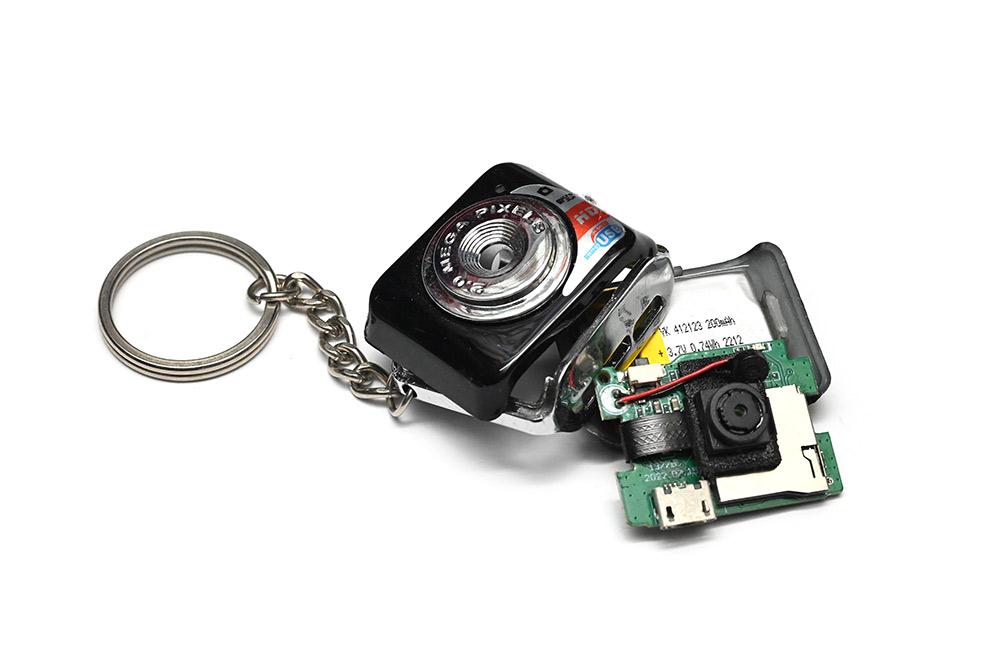
I'd like to think that enough of my readership now hails from China that what I write has a real effect on the direction cheap tat is heading. I certainly spend enough on AliExpress to make my voice heard. In 2024, finally something approaching my desires popped up.
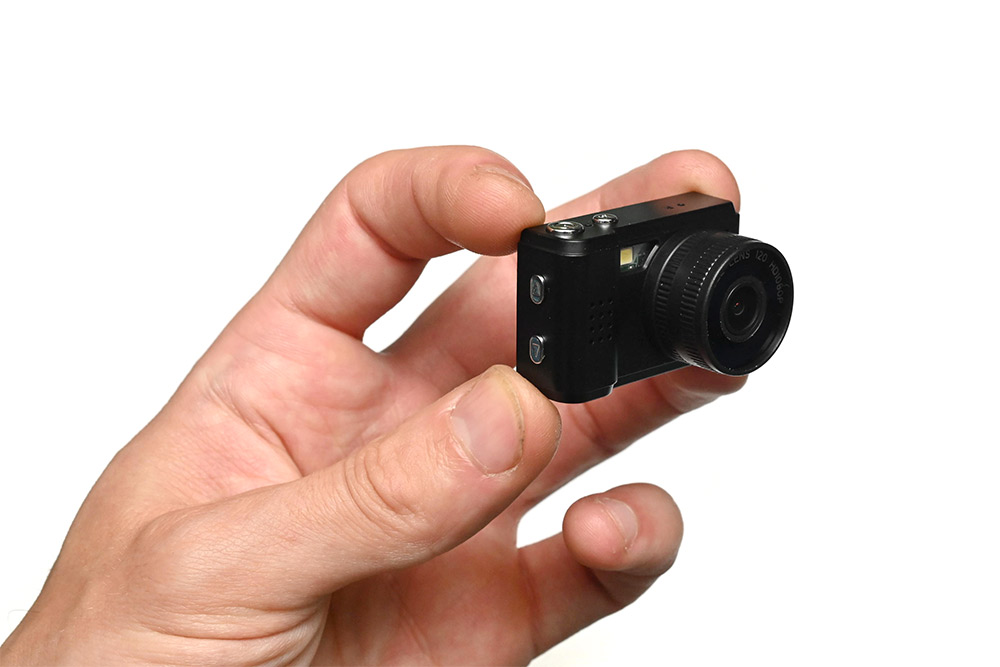
Unlike any of the keychain cameras before, this one actually has a screen on the back, and feels much more like a usable camera (for better or worse). Delightfully it can play back pictures on the SD card, and even has a white LED as a "flash". It doesn't look like I wanted, but it does at least look like a scale model camera.
The main downside is that it's little more than a repackaged dashcam, so when you power it up it defaults to video mode, and the on/off process involves a cutesy sound bite. It also, when powered by USB, immediately begins recording a video. But it felt like my desires are finally getting heard, or at least, enough other people have the same wants as me. Could we get this, exactly this, but in a pseudo-rangefinder enclosure?
In 2025, yes, yes we can!
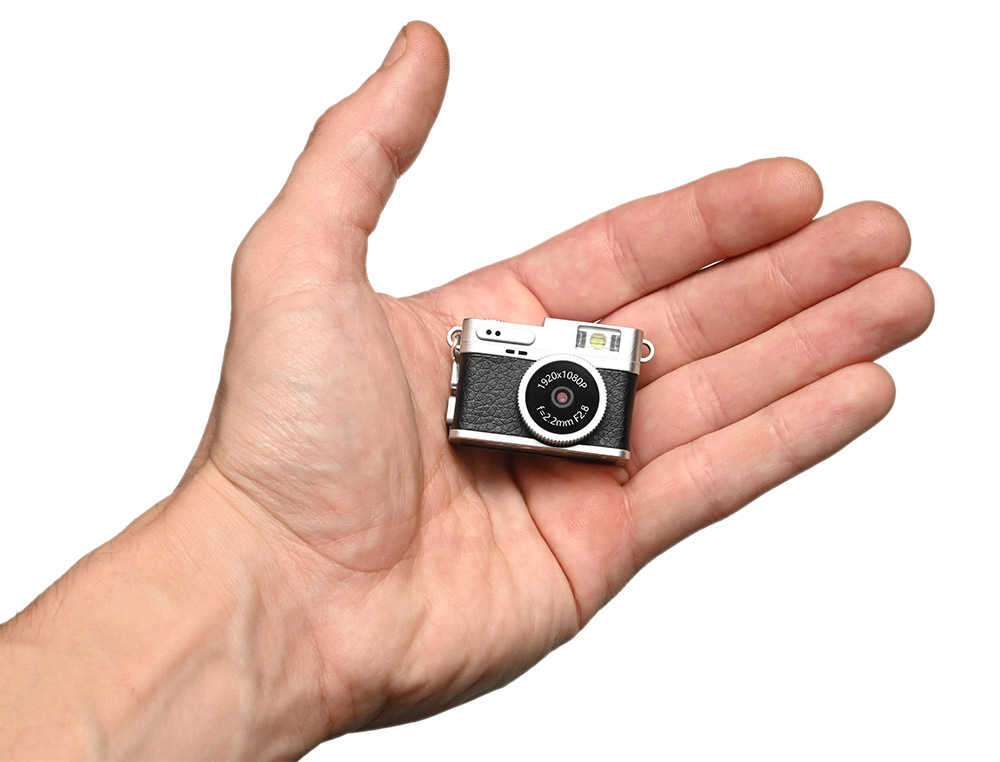
After over 20 years of begging for it, I think we've finally hit the mark. The body has faux leather on silver plastic, the LED takes the spot of the rangefinder, and as with the previous one it has a screen and playback capabilities. Mercifully, they've made a tiny but significant change in the firmware: on power-up, the default mode is to take pictures.
The pictures it takes are as dreadful as ever, but that's part of the art.